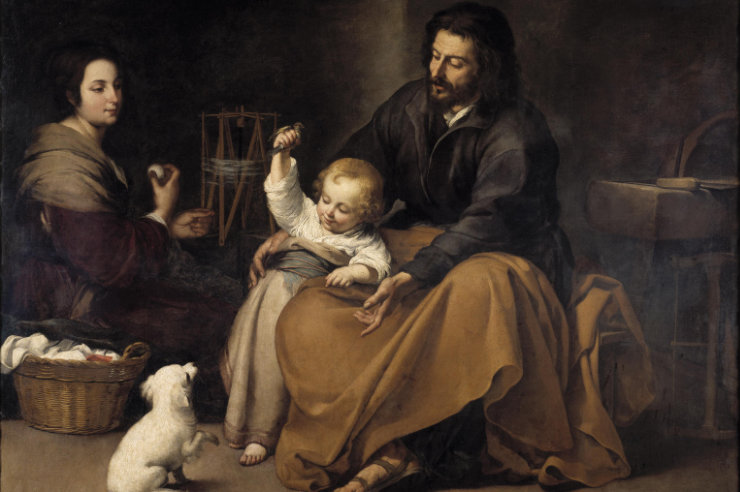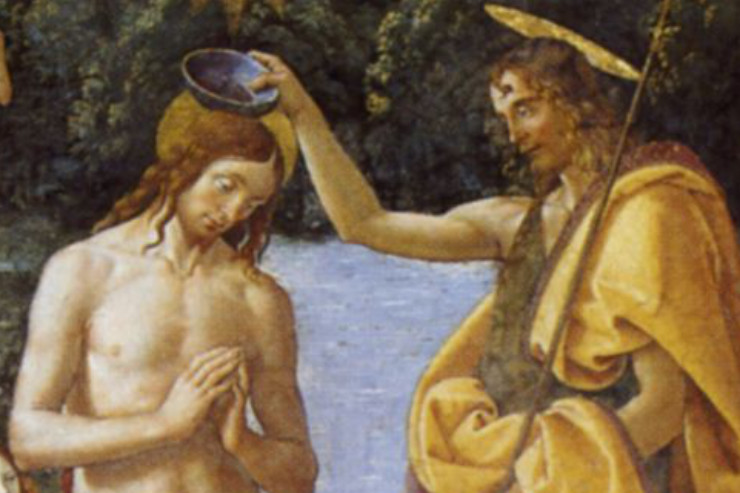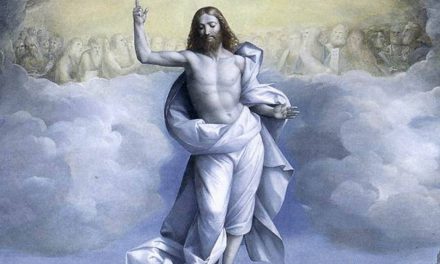Four Sundays ago, I mentioned here that the liturgical calendar of the Church was taking a short break from the Gospel of Mark, which we had been hearing this year at Sunday Mass. Next Sunday, we will return to Mark’s Gospel.
Counting today, we have spent five consecutive Sundays hearing from the sixth chapter of John’s Gospel. Its content has been focused profoundly and powerfully on the Sacrament of the Eucharist.
Eucharist—Source and Summit of the Christian Life
The Catechism of the Catholic Church, quoting from Lumen Gentium, Vatican II’s dogmatic constitution on the Church, describes the Eucharist as, “the source and summit of the Christian life.” It goes on to say that, “The other sacraments, and indeed all ecclesiastical ministries and works of the apostolate, are bound up with the Eucharist and are oriented toward it. For in the blessed Eucharist is contained the whole spiritual good of the Church, namely Christ himself, our Pasch.” (cf. CCC 1324)
The doctrine of the Eucharist is one of the most central teachings of the Church that distinguishes Catholic belief from that of non-Catholic Christians.
In the Sacrament of the Eucharist, Jesus Christ—Body, Blood, Soul and Divinity—is present under the appearances of bread and wine. At the Eucharistic celebration—the Holy Sacrifice of the Mass—the once for all Sacrifice of the Cross is made present to us and we are present at the heavenly liturgy where the risen Christ stands as a slain Lamb before the Throne of God, interceding on our behalf.
In recent years, a disturbing percentage of Catholics either express a misunderstanding of this teaching or outright unbelief. And so these five Sundays have presented us an opportunity to become reacquainted with what is not only central to our faith but at the heart of our worship and celebration in Holy Mass.
I will be very brief today and ask that you commit to spend time in the coming week prayerfully rereading and reflecting on John 6 and allow the Father too draw you into more perfect union with His Son in this Sacrament.
Let’s look at what we have heard in these five Sunday gospel readings:
Feeding of the Five-Thousand
We began four Sundays ago with the account of the multiplication of the loaves and fishes or the feeding of the five-thousand. The material focus of this miracle quickly moves to the bread which satisfied the material hunger of the people. It is the second “food” miracle of John’s Gospel, the first being the miracle of the water turned into wine at Cana in Chapter 2. You can see the motif of the bread and wine take shape.
Food that does not Perish
Three Sundays ago, the people went looking for Jesus, asking Him for more food. He told them not to seek food that perishes. Such food can fill our material needs, but will never satisfy our spiritual needs.
This served as a prelude to the Bread of Life Discourse we heard at the past two Sundays. The Bread of Life Discourse introduces Jesus as the bread which comes down from Heaven.
Bread of Life Discourse
First, we are invited to faith in Jesus as the food that does not perish and that gives eternal life. Second, we are invited to the Eucharist. Jesus tells us that this food is His flesh and blood. Yes, faith is critical and first, but we are to actually eat His flesh and drink His blood in the Eucharistic sacrament. He used increasingly strong and graphic language in the discourse to make sure that point was not missed. Not the flesh of a dead person, that would be sinful; but rather the flesh and blood of the risen, living Christ sacramentally present in Sacrament.
And so we arrive at today’s gospel passage.
Reaction of the Disciples
His disciples are not simply confused at what He said, they are repulsed and disbelieving. Jesus responds, not by backing off from the “hard words,” but by pointing forward to a future miracle, “Does this shock you? What if you were to see the Son of Man ascending to where he was before?”
He explains that it is the Spirit who can bring about belief and understanding through faith concerning this mystery and not our human reason alone.
This is what he meant when He said, “It is the spirit that gives life, while the flesh is of no avail. The words I have spoken to you are Spirit and life.”
Some non-Catholic Christians point to these words to justify their rejection of the Doctrine of the Eucharist. But to do so ignores Christ’s adamant and repeated teaching in this chapter that His flesh brings life. “I am the living bread that came down from heaven; whoever eats this bread will live forever; and the bread that I will give is my flesh for the life of the world.”
This is why the invitation to faith precedes the invitation to Eucharist.
The disciples cannot accept this hard teaching and abandon Jesus in large numbers and no longer followed Him. Notice that Jesus did not say to them, “I am only speaking symbolically, you misunderstand me, come back.” No, He meant what he said, He knew that they understood Him correctly, and He let them go away.
Profession of Faith
He then turned to the Apostles and asked them if they would also leave Him. And Peter replied, “Master, to whom shall we go? You have the words of eternal life. We have come to believe and are convinced that you are the Holy One of God.”
We come to Holy Mass to offer worship in thanksgiving to our God and to receive His Son in the most personal way possible in Holy Communion. If any of us present have any lingering doubts, let us echo the words and growing faith of St. Peter and surrender to the Lord, the Holy One of God.
Into the deep…
For your reflection on the True Body and Blood of Christ, here are the words to Ave Verum Corpus and a video performance from the late, great Leonard Bernstein…
“Ave Verum Corpus natum de Maria Virgine…”
“Hail, True Body, born of the Virgin Mary…”
Simply magnificent! Here is only an approximate English translation, more literal than poetic:
Hail, true body, born of the Virgin Mary,
Who truly suffered, sacrificed on the Cross for man,
Whose side pierced whence flowed water and blood,
Be for us a foretaste in the test of death.
O my loving, Gentle One, Sweetest Jesus, Mary’s Son.
Amen.
And if you liked this article, please press the Recommend button below the video and also share this content using the social media buttons. Thanks! — Deacon Mike
[youtube id = “6KUDs8KJc_c”]
Into the Deep by Deacon Mike Bickerstaff is a regular feature of the The Integrated Catholic Life™.
Please follow me on Twitter:















